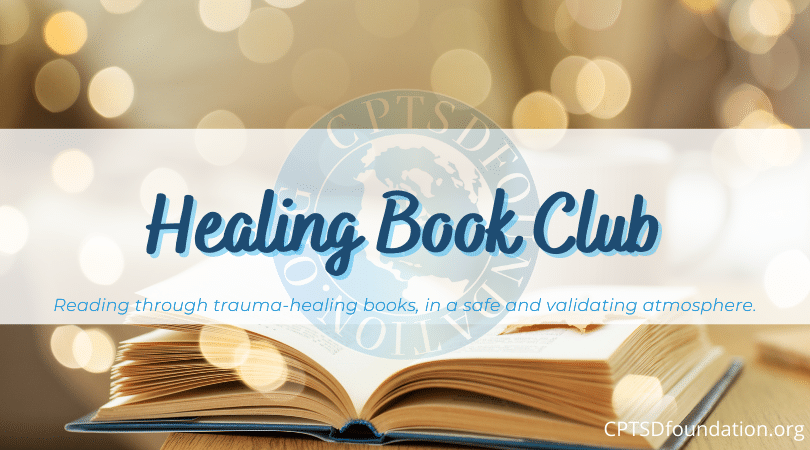***Trigger Warning: This article will contain self-harm information and may not be suitable for all audiences.***
This series has focused on different types of self-harm, its causes, and a description of those who practice it. In this piece, we continue our open and honest look at self-harm by highlighting some of the mental health conditions most associated with it.
First, a Short Recap of What Self-Harm Is

Before we examine the various mental health disorders most associated with self-harm, we need to pull over for a moment and recap the definition of self-harm.
The following is quoted from the first part of this series, “Self-Harm and Complex Post-Traumatic Stress Disorder.”
Self-harm, also known as self-injury, happens when a person becomes overwhelmed and deliberately hurts their own body. The injuries inflicted on oneself can be anywhere from minor cuts to severe injuries that are life-threatening.
There as many methods to self-harm as there are people who do it, but below are a few examples:
- Pulling out your hair
- Punching oneself
- Punching a wall to injure oneself
- Cutting oneself
- Bruising oneself
- Burning oneself
- Forcing oneself into extreme fasting
Not all people who self-harm have a mental health condition, nor is self-injury a mental disorder on its own. Many people who do self-harm, though, do have an underlying mental health condition. People who self-harm are not usually trying to die by suicide, but these behaviors can lead to a higher risk of suicide completion or death from self-injury complications.
As one scientist put it, “Self-harm has been defined as “a preoccupation with deliberately hurting oneself without conscious suicidal intent, often resulting in damage to body tissue” (Muelehkamp, 2005).
The Brain and Self-Harming Behaviors

Normally, when a person is injured, they feel pain and react to prevent it, but self-harming individuals react backward; they seek out pain. Most people feel sadness, anger, and frustration when pain is inflicted upon them (such as stubbing a toe), but those who self-harm react very differently.
People who self-harm are calmed by pain and anger, sadness, and frustration disappear during a self-harming episode. Relief floods the self-harmer, and after the acute pain has passed, they feel happier, more content, and satisfied. Therefore, the real motive of self-harm is not to hurt oneself but to regulate emotions.
The neurobiological (brain) model of self-harm states that endorphins released by the brain in response to pain flood the person, allowing for a temporary rush of pleasure that eliminates the overwhelming negative emotions the person has self-harmed was feeling before the event.
Still, others are self-harming to show contempt for themselves and produce pain as a form of self-punishment. This happens because the neurobiology of the brain is deeply connected with our feelings and emotions. The same rush of relief is released, but for a different reason.
The Link Between Mental Health Disorders and Self-Harm

The existence of psychiatric disorders is a well-established factor for people who self-harm. A study conducted using inpatient records from the Hong Kong Clinical Data Analysis and Reporting System helped understand the connection between different mental health diagnoses and self-harm.
In the ten years from 2000 to 2010, researchers followed 86,353 people who had just had their first psychiatric disorder diagnosis. They found that among those with a substance misuse disorder was the highest self-harm incidence, followed closely by those living with a personality disorder (Chai et al., 2020).
This research is only one of many that describe how the existence of a mental health disorder is the number one cause of a person practicing self-harm (Singhal et al., 2014). The mental health disorders most associated with self-harm are as follows:
- Bipolar Disorder
- Complex Post-Traumatic Stress Disorder
- Dissociative Disorders
- Borderline Personality Disorder
The paragraphs below will be dedicated to each disorder, what it is, and how it is connected to harming oneself.
Self-Harm and Bipolar Disorder
Bipolar disorder, once called manic-depressive disorder, is a mental health condition that causes unusual mood shifts and other problems such as high energy and activity levels, concentration problems, and the harm to its victims of the ability to carry out day-to-day tasks.
There are three types of bipolar disorder, including Bipolar I, Bipolar II, and Cyclothymic Disorder.
Bipolar I Disorder is defined by manic (excessively high energy) episodes that last at least 7 days or by manic symptoms that are so severe as to cause the person to need immediate hospitalization. Commonly depressive episodes occur as well that last for at least 2 weeks. It is not uncommon for people to experience episodes of depression with manic symptoms mixed in.
Bipolar II Disorder is defined by a pattern of depressive episodes and hypomanic episodes, but no full-blown manic episodes like in Bipolar I Disorder.
Cyclothymic Disorder includes periods of hypomanic symptoms and periods of depression lasting for at least 2 years. However, the symptoms of cyclothymic disorder do not meet the diagnostic criteria for a hypomanic or depressive episode.
Because of the violent mood swings and the stigma that accompanies bipolar disorder, many people who live with it feel the need to self-harm.
Self-Harm and Complex Post-Traumatic Stress Disorder
Until relatively recently, complex post-traumatic stress disorder was little understood, and it still is not recognized in the Diagnostic and Statistical Manuel of Mental Disorders, 5th Edition (DSM-5), the bible of the psychiatric world whereby they find the criteria for diagnosing mental health disorders.
However, complex post-traumatic stress (CPTSD) disorder is very real and is different from post-traumatic stress disorder (PTSD) in that CPTSD is formed following numerous and repeated traumatic events when PTSD is caused by a single horrifying event.
Self-harm may serve to hide and suppress emotions and memories that are associated with traumatic events.

Dissociative Disorders and Self-Harm
Dissociative disorders involve problems with identity, perception, memory, emotion, and sense of self. Dissociative disorders have the potential to limit and alter the trajectory of lives and are caused by trauma, usually in childhood.
Some examples of dissociative symptoms include experiencing detachment from one’s own feelings as if seeing oneself from outside the body and losing memory.
People living with a dissociative disorder are six times more likely to self-harm than others in their same age range and sex in the general population (Rossi 2019). That is a staggering statistic, and it means that many people who have a dissociative disorder are at a higher risk of attempted or completed suicide as well.
The two main reasons people living with a dissociative disorder self-harm are because of the stress involved in healing and the self-loathing that often accompanies the memories of the trauma that formed the dissociative disorder in the first place.
Also, there is a tremendous stigma against dissociative disorders, especially its most extreme form, dissociative identity disorder, that many people have harmed themselves.
Self-Harm and Borderline Personality Disorder
Borderline personality disorder (BPD) is a debilitating mental health condition that includes unstable interpersonal relationships, emotions, and self-image accompanied by a pattern of impulsive behaviors.
Those with BPD are at high risk of self-harm, and this behavior impacts both women and men. Some people living with borderline personality disorder may engage in self-harming behaviors to release the intensely negative emotions they feel, including abandonment, feelings of emptiness, and an intense need to be in a relationship with someone at any cost.
Summing It All Up for You
Self-harm or self-injury occurs when a person becomes overwhelmed and deliberately cuts or otherwise harms their body. These injuries can be either minor or may require medical attention.
While self-harm might be practiced outside the context of a mental health disorder, it is unlikely, and the most significant culprits seem to be bipolar disorder, complex post-traumatic stress disorder, dissociative disorders, and borderline personality disorder.
The good news is that, with appropriate treatment and raised awareness, most people who self-injure will stabilize and find other methods to get out their frustrations other than harming themselves.
“You are not your past. You are the warrior that rose above it to become the example of someone who didn’t just survive but thrived in creating the most beautiful last chapter of their life. ” – Shannon L. Alder
References
Chai, Y., Luo, H., Wong, G. H., Tang, J. Y., Lam, T. C., Wong, I. C., & Yip, P. S. (2020). Risk of self-harm after the diagnosis of psychiatric disorders in Hong Kong, 2000–10: a nested case-control study. The Lancet Psychiatry, 7(2), 135-147. https://pubmed.ncbi.nlm.nih.gov/31974072/
Hayes, J. F., Pitman, A., Marston, L., Walters, K., Geddes, J. R., King, M., & Osborn, D. P. (2016). Self-harm, unintentional injury, and suicide in bipolar disorder during maintenance mood stabilizer treatment: a UK population-based electronic health records study. JAMA Psychiatry, 73(6), 630-637.
Rossi, R., Longo, L., Fiore, D., Carcione, A., Niolu, C., Siracusano, A., & Di Lorenzo, G. (2019). Dissociation in stress-related disorders and self-harm: A review of the literature and a systematic review of mediation models. Journal of psychopathology. https://www.jpsychopathol.it/wp-content/uploads/2019/09/06_Rossi.pdf
Singhal, A., Ross, J., Seminog, O., Hawton, K., & Goldacre, M. J. (2014). Risk of self-harm and suicide in people with specific psychiatric and physical disorders: comparisons between disorders using English national record linkage. Journal of the Royal Society of Medicine, 107(5), 194-204. https://pubmed.ncbi.nlm.nih.gov/24526464/

My name is Shirley Davis and I am a freelance writer with over 40-years- experience writing short stories and poetry. Living as I do among the corn and bean fields of Illinois (USA), working from home using the Internet has become the best way to communicate with the world. My interests are wide and varied. I love any kind of science and read several research papers per week to satisfy my curiosity. I have earned an Associate Degree in Psychology and enjoy writing books on the subjects that most interest me.





for a radical perspective see Bodies of Resistance by Laura Doyle and Anorexic Bodies by Morag McSween
Both locate the issues in misogyny, patriarchy and empire.
What I have found interesting is the deletion of Professor Ann Carson from the histography of ‘how’ BPD first entered the DSM in the 90s.
Also, the work of Judith Simmer Brown on Inner Dialogue casts another very important view point for those growing up in cultures or societies opposed to their natural identity.
The Doyle work is thorough and staggeringly so. Well worth the effort.